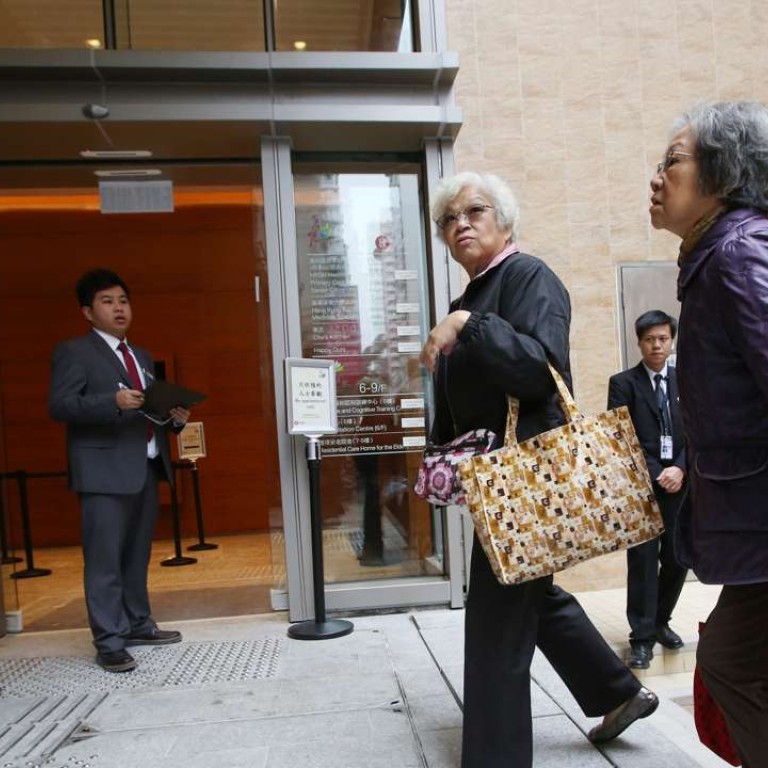
Time is running out to find solutions to housing problems faced by Hong Kong’s rapidly ageing population
Legislative councillor Tony Tse Wai-chuen has called on the government to encourage private developers to build homes suitable enough so that retirees could live relatively independent lives
It’s a potential business opportunity that is attracting interest and a subject that cannot be ignored. While there has been plenty of discussion on Hong Kong’s rapidly ageing population, a solution to housing the elderly has yet to be identified so that a coherent policy can be implemented.
Figures indicate that by 2034, almost one-third of Hongkongers will be aged 65 or older, which will create huge demand to build quality housing for that group of people.
At present, there is a lack of quality housing for the elderly. According to the Social Welfare Department, there are about 73,000 bed spaces for the elderly, including government-subsidised (37 per cent) and non-subsidised bed spaces (63 per cent).
Most of the existing homes for the elderly are geared towards nursing and specialist-care facilities, says legislative councillor Tony Tse Wai-chuen, who represents the Architectural, Surveying and Planning constituency.
“However, the housing needs of those who could look after themselves have been overlooked. For this group of elderly people, homes equipped with supportive facilities and services are [needed].”
Although the Housing Authority provides two types of housing for the elderly in public rental estates, he says the supply is insufficient and that demand for better-quality homes has yet to be addressed.
“When we look around our neighbourhoods, a lot of seniors are living nearby,” Tse says. “But they’re most likely living in a building that’s not user-friendly to them. The door of the flat may not be wide enough for wheelchair access. The public corridor may be too narrow for slow walkers.”
He called on the government to encourage private developers to build homes that would enable retirees to live relatively independent lives.
“Architects may design homes to take into account the needs of both the elderly and the younger [population]. An example [is to have] an additional lift [installed in a building in which the doors stayed open longer so that the elderly would have] adequate time to leave the lift],” Tse explains.
“Future planning should also take into account the needs of senior housing communities,” Tse says. “For example, health care facilities should be located within easy reach of where the elderly live.”
Future planning should also take into account the needs of senior housing communities
Apart from the lack of government incentives for developers, a shortage of professional management expertise is another obstacle to the development of senior housing.
The future success of any private-sector participation in the “silver-hair” market would need support from the government and a sound working relationship with non-profit organisations, as well as the creation of a new elderly community, says Dr Charles Lam, managing director, real estate at Baring Private Equity Asia.
“While part of the problem can be blamed on scarcity of land, the government should take the initiative to [get] the private sector [involved],” he says.
To attract developers and professional operators, there must be tax incentives, some form of subsidy, or shared ownership between the investor and government to offset the high investment cost, Lam suggests.
In the United States, operators of senior housing primarily manage facilities they own themselves or lease from third parties, often large health care real estate investment trusts.
“The success of housing [for senior citizens] lies in the formation of a community, where all facilities and services for the elderly are easily accessible,” Lam says. “The operator also plays an important role in providing software in addition to the hardware. It can’t just be yet another residential development project.”
Tanner Hill, a non-subsidised rental project by the Hong Kong Housing Society, is designed for the elderly, and a good start, but its lukewarm market response may suggest that the elderly prefer ownership to renting.
“The mindset is that they still prefer a piece of real estate that they can pass on to the next generation,” Lam says. “The business model may have to be shifted towards ownership, instead of long-term rentals.”
Beyond the Tanner Hill project, privately developed and managed senior housing projects are rare. Swire Properties has one such potential project in Pok Fu Lam, but its completion schedule remains uncertain.
“For our senior housing project in Pok Fu Lam, we are in the process of seeking approval from the government on land-lease modification,” says a Swire Properties spokeswoman. “No decision has been made on the project.”
Asked if it would build more senior housing projects if incentives or development flexibility were permitted, she says Swire Properties would carefully study and evaluate any such cases to decide whether they fitted into its business strategy.
Last month, the Royal Institution of Chartered Surveyors hosted an annual conference in Hong Kong to discuss business potential in Asia’s emerging “silver-hair” market, including the untapped sector for senior housing in Hong Kong.
